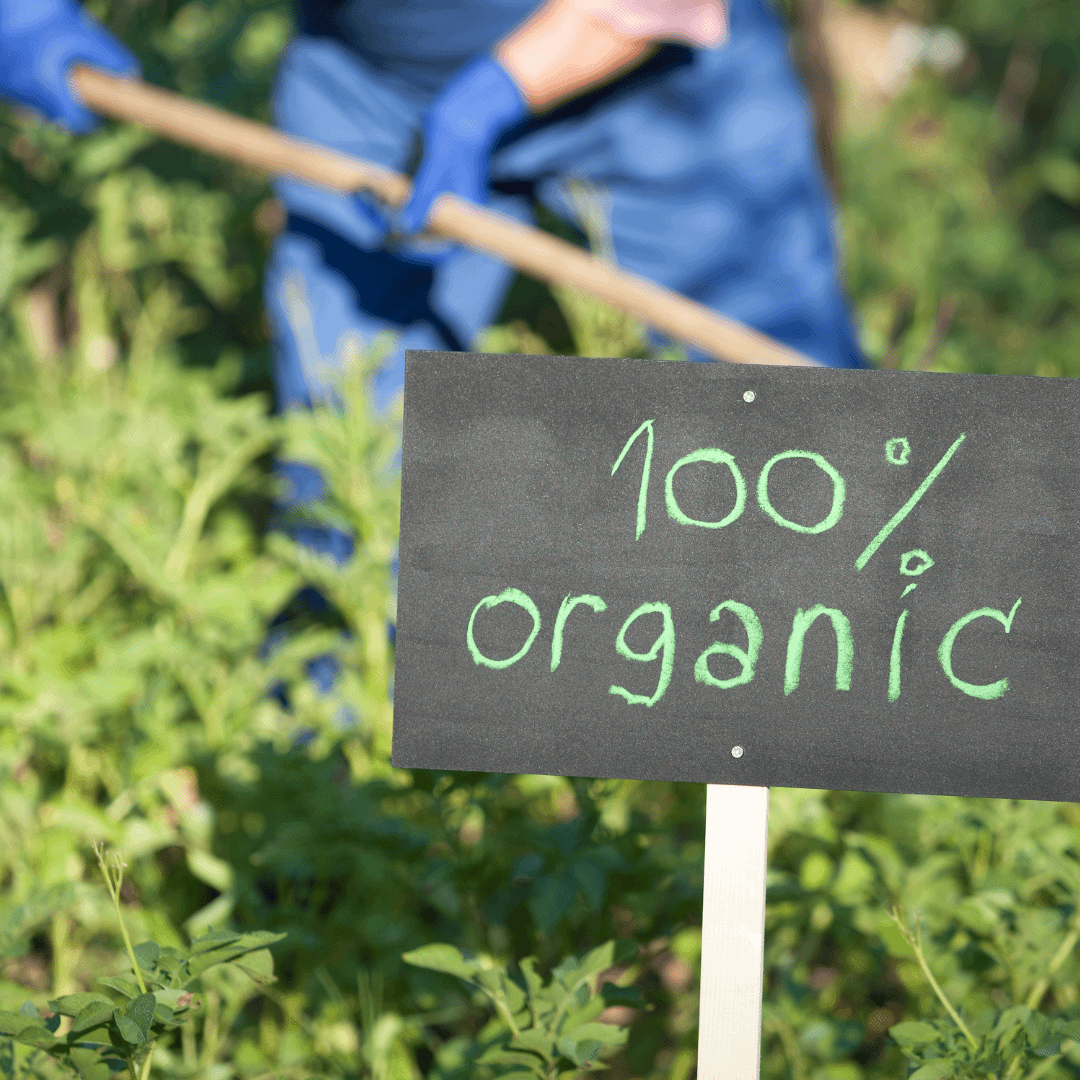- The global market for clean label ingredients is rapidly growing due to increasing consumer demand for products with simple, transparent, and recognizable ingredients.
- CPG brands can use food certifications like USDA Organic and Non-GMO Project Verified to build consumer trust, gain access to premium retailers, and justify premium pricing.
- The strategic choice between obtaining an organic or non-GMO certification depends on key factors, including a brand’s mission, target audience, budget, and product category.
- Acquiring either certification involves a rigorous, multi-step process that includes detailed planning, third-party evaluation and inspection, and annual renewal to ensure ongoing compliance.
The global market for clean label ingredients is projected to reach up to USD 65.95 billion by 2030, with a CAGR of 6.51 within the 2025 to 2030 forecast period. It’s a clear indicator of a massive shift in consumer behavior, with growing health consciousness and a demand for transparency causing shoppers to seek out simple and recognizable ingredients.
For a natural products company, this consumer-driven movement is fundamentally reshaping the industry, and, by extension, their approach to CPG brand marketing. This makes an effective strategy related to clean label principles a non-negotiable part of modern CPG brand management.
Food certifications like USDA Certified Organic and Non-GMO Project Verified are great ways to show your brand’s commitment to using clean label ingredients and being sustainable. However, getting both certifications might cause a significant reduction in your profit margins.
This article discusses what non-GMO and organic CPG certification mean, their differences, and how they’re obtained. It explains why these certifications matter to natural retailers and their customers, and provides a good food certification comparison to help you make the best choice for your brand.
What is a “Clean Label”?
“Clean label” is a non-scientific and non-regulatory term recognized by the food industry driven by consumer demand on ingredient simplicity and transparency. It’s a term that stemmed from a consumer’s need to see a short list of ingredients that they can pronounce and understand, with a clear absence of artificial additives, colors, or preservatives.
What Clean Label Certifications Mean For Your CPG Brand
A clean label strategy can lead to a thriving and sustainable CPG food brand. Many natural retailers have strict ingredient standards, and certifications act as a trusted and readily recognizable signal for their health-conscious consumers. Adopting a clean label approach shows that your brand is aligned with the values of both the retailers you want to partner with and the consumers you want to attract.
As previously mentioned, pursuing a recognized food certification is a significant investment, but the benefits of obtaining clean label certifications for your CPG brand can provide a substantial return. Here are some notable CPG brand certification benefits:
- Increased Consumer Trust and Credibility: Third-party seals from trusted authorities like the U.S. Department of Agriculture (USDA) or the Non-GMO Project act as an unbiased endorsement of your brand’s claims, helping you dispel any consumer doubts at the point of purchase.
- Access to Premium Retailers: Many natural and specialty food stores require or give preferential treatment to brands with recognized certifications, so obtaining these certifications can make your brand marketable to valuable retail partners.
- Justification for Premium Pricing: The investment in certification and higher-quality ingredients supports a higher price point. Consumers have consistently shown that they’re willing to pay more for the added assurance that these seals provide.
- A Powerful Differentiator on a Crowded Shelf: CPG is a highly competitive industry, so any competitive edge that can help your brand stand out on the shelf is a good investment. A recognizable logo like the USDA Organic seal or the Non-GMO Project butterfly label can help your product stand out visually by readily communicating its value proposition.
- Enhanced Brand Reputation and Mission Alignment: Certifications provide tangible proof of your brand’s commitment to its values. This strengthens your brand story and builds a deeper connection with consumers who are increasingly making purchases based on a company’s ethics and mission.
Certified Organic vs Non-GMO Project Verified: Tips on What to Prioritize
A recent survey by the Organic Trade Association reveals a high degree of trust by consumers in the USDA Organic seal, mainly brought by their familiarity with this food certification. It’s trusted by 70% of consumers, making it one of the most trusted food labels by Americans, second only to the American Heart Association’s iconic checkmark.
Why Prioritize One Over Another
While having both certifications can boost marketability, pursuing both can also significantly reduce your profit margins. The combined financial burden of these two distinctly different certifications can be immense, eroding profitability from premium pricing.
Despite being the food certificate that the majority of the American consumers trust and are familiar with, USDA Organic requires a comprehensive and expensive overhaul of your entire supply chain and production. Meanwhile, Non-GMO Project Verified is a single-issue food certification, often less complex and costly.
Brands, then, must carefully evaluate their target audience and business model to determine which certification offers the best return on their investment.
The table below summarizes the key factors to consider when discerning what to obtain between an organic or non-GMO certification, providing a good comparison:
|
Factor / Consideration |
When to Prioritize USDA Certified Organic |
When to Prioritize Non-GMO Project Verified |
|
Brand Story & Mission |
Your brand's core message is about holistic, earth-friendly farming and comprehensive natural principles. |
Your brand's primary focus is on ingredient safety and directly addressing the specific consumer concern of GMOs. |
|
Target Audience |
You are targeting core natural shoppers who are highly educated on ingredients and willing to pay a significant premium. |
You are targeting a mainstream audience concerned about GMOs in high-risk categories like corn and soy. |
|
Product Category |
You compete in a high-stakes category where "organic" is the consumer expectation (e.g., baby food, milk, coffee). |
Your product uses high-risk ingredients (e.g., corn, soy, canola) where the non-GMO claim is most impactful. |
|
Business Stage & Budget |
You are an established brand or have the funding to support the higher cost and complexity of the certification. |
You are an emerging brand or startup seeking a more financially accessible and pragmatic first step into certification. |
|
Product Formulation |
All of your ingredients and processes are fully compliant with the National Organic Program standards. |
Your product contains functional ingredients (e.g., certain vitamins or enzymes) that cannot be certified organic. |
When to Prioritize USDA Certified Organic
The USDA Certified Organic label is a holistic certification regulated by the USDA that covers how food is grown, handled, and processed. It serves as a comprehensive guarantee of a systems-based approach to agriculture that prohibits GMOs and most synthetic pesticides and fertilizers while promoting ecosystem health.
Prioritize organic certification when:
1. Your Brand is Built on Principles of Sustainability
The organic seal is the most powerful way to validate claims about enhancing soil health, promoting biodiversity, and adhering to environmentally-friendly practices. It's tangible proof to your consumers of your commitment to sustainability.
2. You Compete in a High-Stakes Category
Being identified as an organic brand is often considered table stakes in product categories like baby food, dairy, coffee, and premium juices. Core natural shoppers and retail buyers in these segments may filter out brands that lack the certification, making it a crucial requirement for gaining access to the shelf and achieving a competitive position.
3. Your Target Audience is the Core Natural Shopper
Your brand is a perfect fit for an organic certification if your ideal customer is a value-oriented shopper, a specific consumer demographic that considers health and wellness as a top priority when trying out a new brand.
These consumers actively seek out the green and white USDA seal as a trusted shortcut to validate a product’s quality. They’re highly educated on ingredients, actively avoid synthetic chemicals, and are willing to pay a significant premium for products they perceive as pure and safe.
When to Prioritize Non-GMO Project Verified
The Non-GMO Project offers a third-party verification with a singular focus on ensuring a product is free from genetically modified organisms (GMOs) through rigorous, ongoing testing and traceability based on the guidelines provided by its Non-GMO Project Standard.
It aims to provide the most trusted and recognized assurance specifically for the non-GMO attribute, a top concern for many consumers.
Prioritize non-GMO certification when:
1. Your Key Differentiator is Specifically Avoiding GMOs
For products made of crops that are highly likely to be GMO, including corn-based snacks, soy proteins, breakfast cereals, or canola oil, the butterfly seal is the most direct and widely trusted way to communicate safety and natural sourcing. It’s a clear, unambiguous signal that resonates strongly with a mainstream audience concerned about this specific issue.
2. The Cost and Complexity of Organic are Prohibitive
For startups and emerging brands, the non-GMO seal can be a more financially accessible first step into the world of certifications. It allows you to build significant consumer trust and gain access to natural retailers without the extensive, and often costly, operational overhaul and supply chain changes required for full compliance with organic certification.
3. Your Product Formulation Presents a Challenge
Some functional or fortified foods use ingredients that are critical to the product’s efficacy but are difficult or impossible to source organically, such as specific vitamins or enzymes produced through modern fermentation. In these cases, the non-GMO seal is often the only viable and credible certification option to demonstrate commitment to natural sourcing.
How to Obtain USDA Certified Organic Certification
Obtaining USDA Certified Organic certification is a detailed and rigorous process designed to ensure integrity from farm to shelf. The process can be summarized as follows:
Step 1: Design an Organic System Plan (OSP)
The OSP serves as the foundation for all aspects related to the operations of your organic brand. It lists the requirements that an organization must fulfill to comply with the regulations enforced by the National Organic Program, including detailed records and plans for seeds and soil amendments, pest control methods, and traceability.
The OSP is the core document that demonstrates your band’s adherence to these regulations, proving to your certifier that you understand and can consistently comply with them.
Step 2: Implement the OSP and Apply to a USDA-Accredited Certifying Agent
Certifying agents are private, foreign, or State entities authorized to review the OSP and evaluate the completeness and accuracy of your CPG brand with the NOP requirements. They assign an organic inspector and endorse and schedule your organization for an on-site inspection.
Certifying agents can be found worldwide, and you may look for the certifying agent nearest to your location by checking the Organic Integrity Database.
Step 3: Undergo an On-Site Inspection
The inspector fills out and completes the site inspection report by conducting various activities related to on-site inspection. They verify the information from the OSP through site inspections. Such a process involves going to and checking the fields, farm buildings, or equipment. They also review and evaluate the methodologies and strategies being implemented by the organization and the corresponding records that support them.
Lastly, the inspector conducts a final interview and may discuss issues that must be addressed by the organization. The certifying agent will receive the report and use it to make a final decision on the certification.
Step 4: Submit Your Inspection Report for Review
Upon receipt of the inspection report and all the accompanying documentation, the certifying agent reviews it and compares the actual practices of the organization to the ones provided for by the OSP. Based on this, the certifying agent will decide whether to approve or deny the certification.
In cases of minor noncompliance issues, the organization will be given a written notification of noncompliance, and will be provided the opportunity to correct or rebut in writing any noncompliance noted by the certifying agent.
Meanwhile, in cases when corrective action is deemed implausible, notifications of noncompliance and denial of certification will be provided to the organization and to the USDA NOP administration instead. Applicants with denied certification will also be given chances to reapply or file an appeal.
Step 5: Receive Your Official Certificate
If your organization is deemed compliant with the organic certification requirements and the corresponding regulations, the certifying agent will finally issue an organic certification and will provide you with a list of products that can be sold as organic.
Once finalized, you can then prepare packaging these products with the official USDA Organic seal, ensuring that you follow all the guidelines related to the certification. You must also establish an internal system for annually updating your OSP and preparing for your yearly inspection to maintain your certification.
How to Obtain Non-GMO Project Verified Certification
The process for Non-GMO Project verification is focused on ingredient sourcing, testing, and traceability. To obtain a Non-GMO Project Verified certification, you need to follow these steps:
Step 1: Select a Technical Administrator (TA)
TAs are the independent, third-party experts approved by the Non-GMO Project to conduct the technical evaluation of your products. Choosing a TA who is responsive and familiar with your industry can significantly streamline the process.
Step 2: Submit Your Product and Ingredients for Evaluation
At this stage, the TA will meticulously assess every single ingredient for its GMO risk level based on the rigorous Non-GMO Project Standard. Be prepared to work closely with your suppliers to gather affidavits, statements of origin, and other documentation about their sourcing and handling processes to prove non-GMO status. Once finished, your TA will confer a Certificate of Verification (COV) for your product
Step 3: Receive Verification and Maximize the Partnership
After a successful technical review, you should receive your official Certificate of Verification (COV) from your TA, which grants you the right to use the highly trusted butterfly seal. You then move from the technical evaluation phase to an active marketing partnership with Non-GMO Project.
Make sure to engage with the Non-GMO Project’s Client Experience team and access their educational materials and co-marketing opportunities to maximize the value of your new verification.
Step 4: Maintain Compliance Through Annual Renewal
Verification is an ongoing commitment, which requires constant efforts for compliance and maintenance. The annual renewal process ensures that your products remain compliant with the Non-GMO Project Standard. It’s also essential in upholding the integrity of the seal.
Stand Out From the Crowd With VDriven
The strategic choice between certifications is an important decision that impacts your CPG branding, pricing, and market access. These seals are a foundational element of successful food marketing strategies in the natural products space, providing the credibility needed to win consumer trust.
At VDriven, we understand that food certifications are a critical component of a successful CPG marketing strategy. We guide brands in choosing the right clean label CPG certification that best aligns with mission and business goals, all working together towards a powerful CPG brand strategy.
Let’s work together in building a marketing plan that turns your commitment to clean label principles into a competitive advantage. Contact VDriven today to learn more about our comprehensive solutions towards sustainable CPG growth.
Frequently Asked Questions (FAQs)
Can CPG Food Certifications Help the Brand Stand Out From Competitors?
Yes, obtaining a recognizable food certification can help your CPG brand stand out from your competitors. It can act as a visual shortcut that immediately communicates a set of values and a standard of quality, helping your product get noticed and building a foundation of trust that can be the deciding factor in a purchase.
Do the Potential Benefits Outweigh the Added Cost of Certification and Ingredient Sourcing?
Yes, the potential benefits can outweigh the added cost. While certification requires an investment of time and money, the trust, confidence, and loyalty that consumers will ultimately attribute to your brand will be worth it. The key is to build the costs into a strategic financial plan and to carefully consider which food certification best represents your brand.
Which Countries Require GMO Labeling?
In the United States, it’s mandatory to disclose any form of bioengineering that your food product was subjected to, under the National Bioengineered Food Disclosure Standard. In addition, Japan, South Korea, Australia, Brazil, Russia, China, and members of the European Union also have mandatory labeling requirements for GMO. Meanwhile, there are some countries with voluntary labeling requirements, including Canada and Hong Kong.





